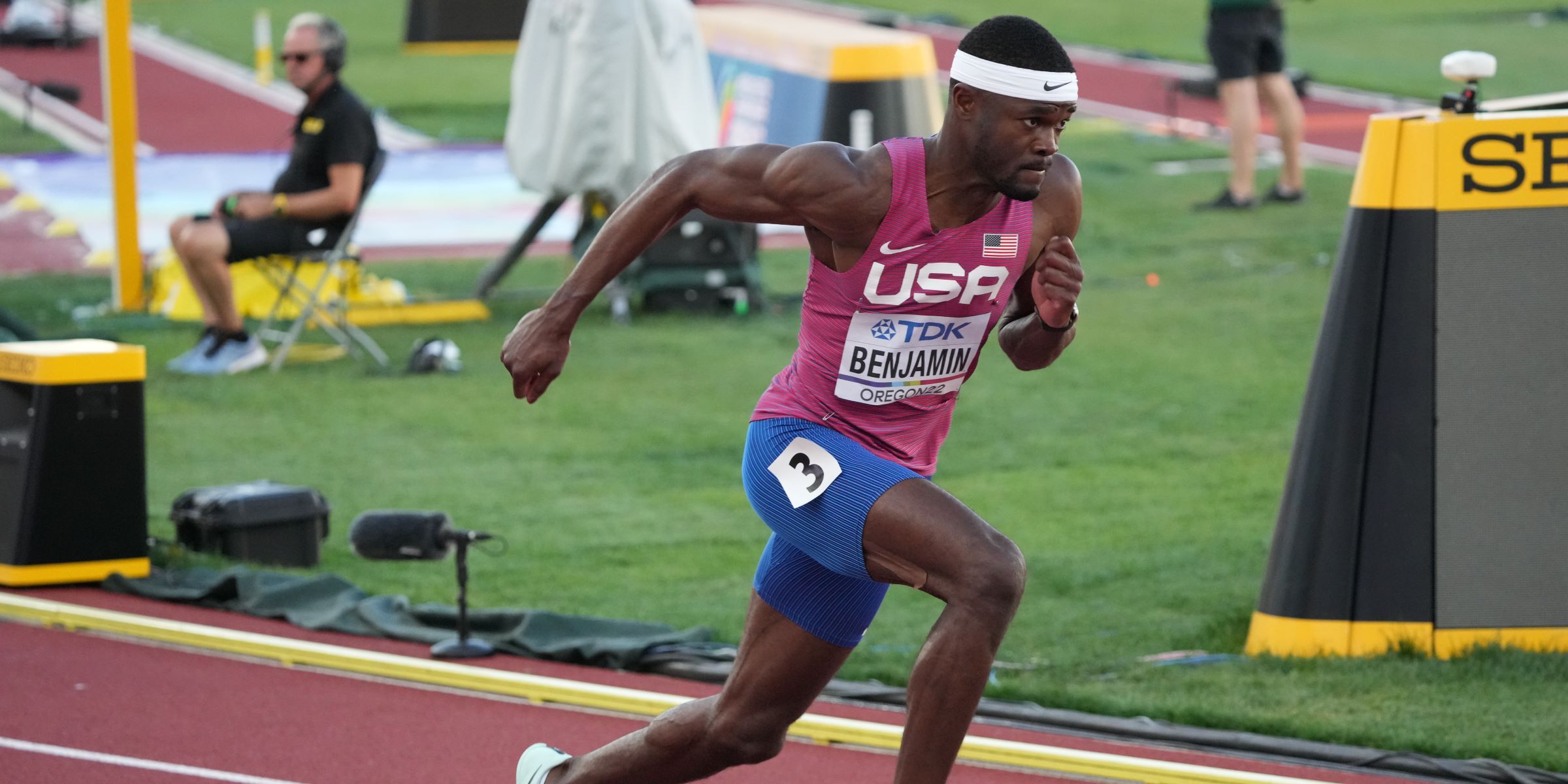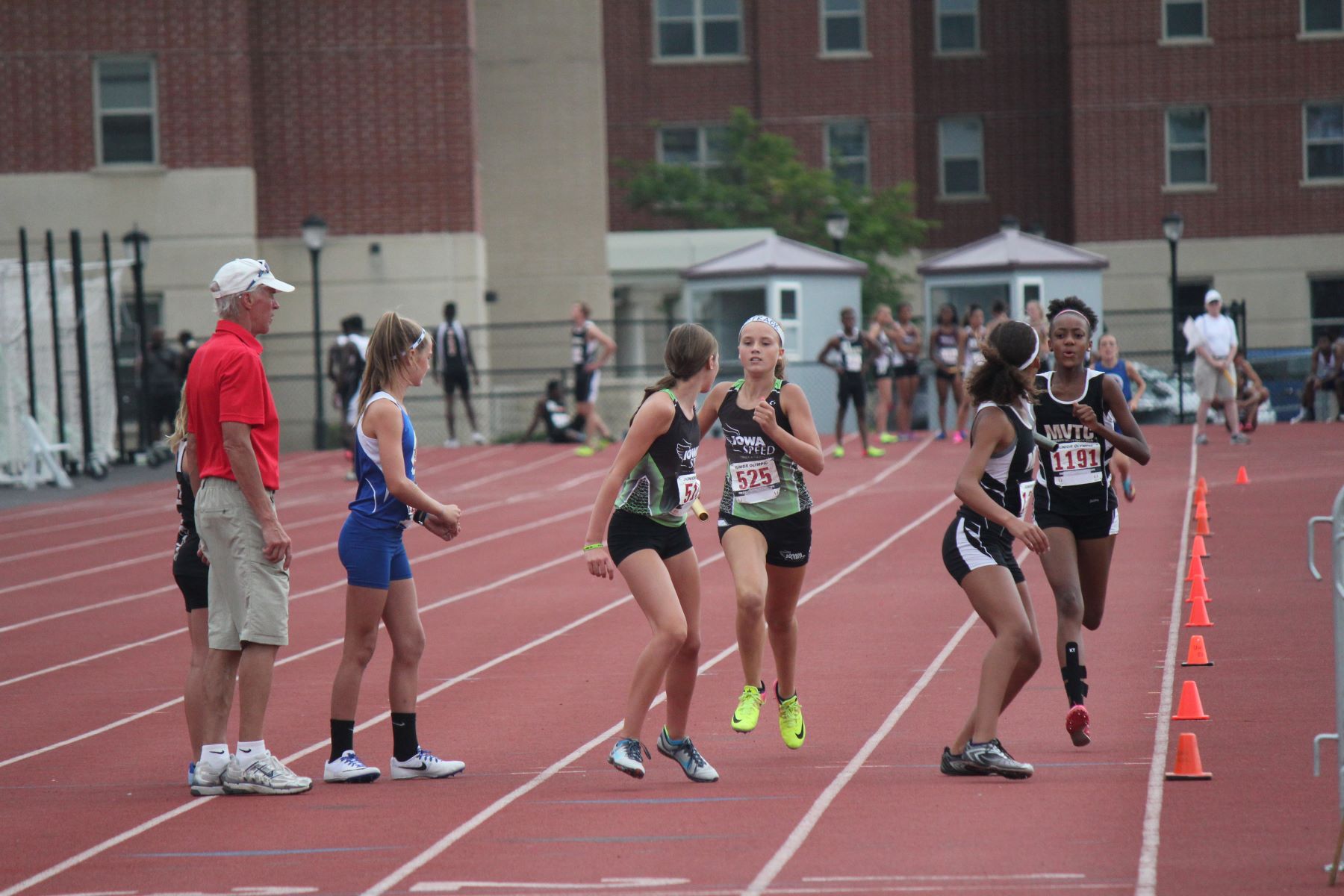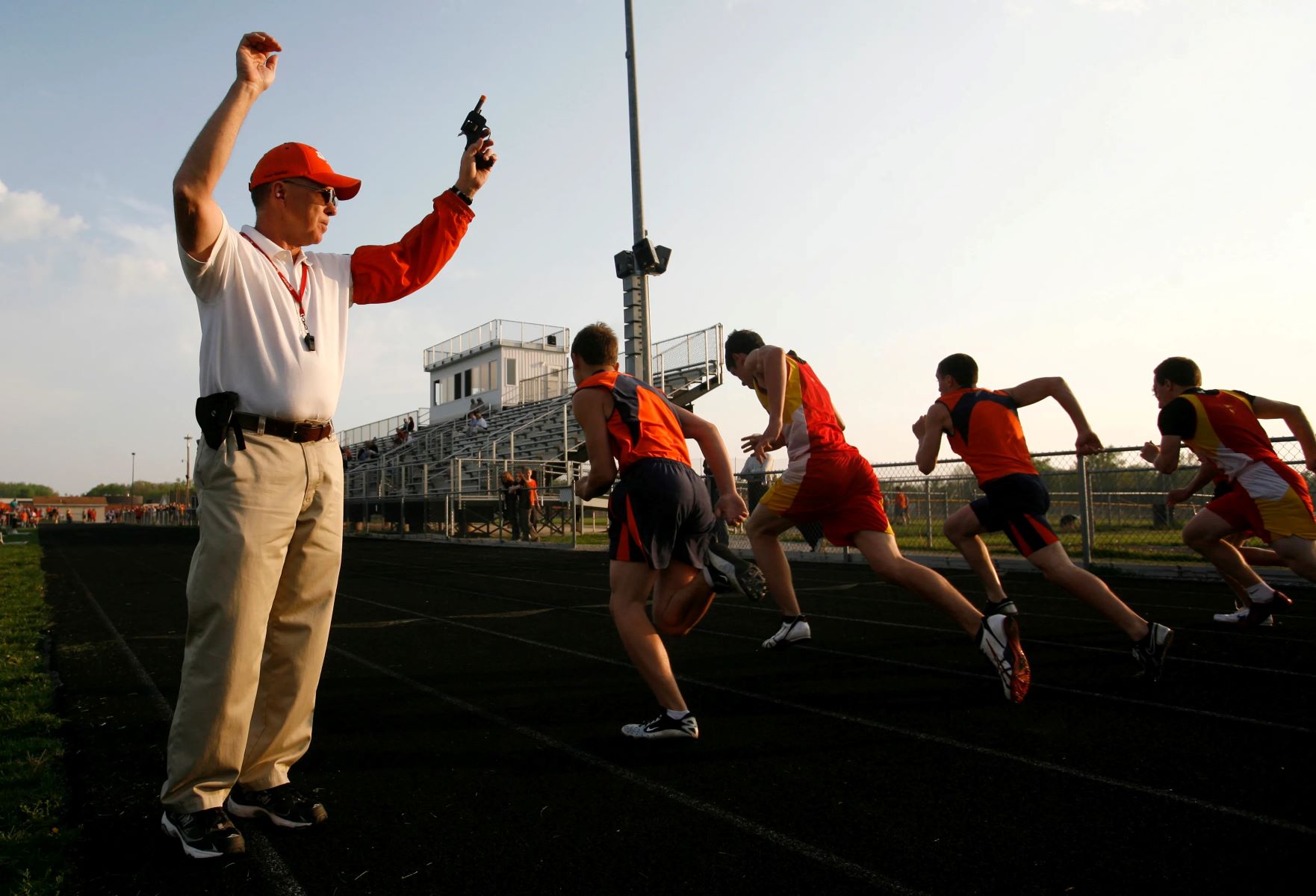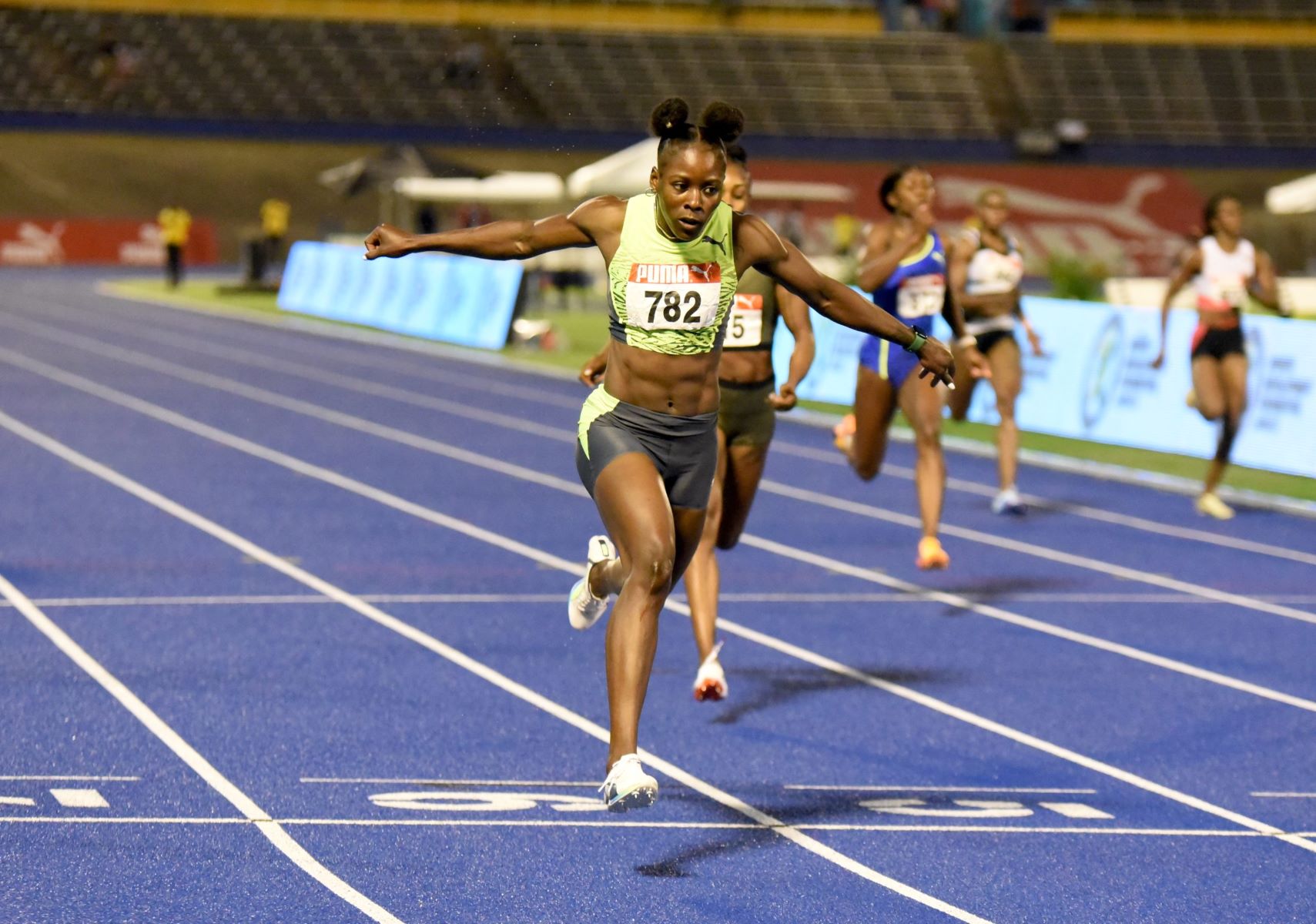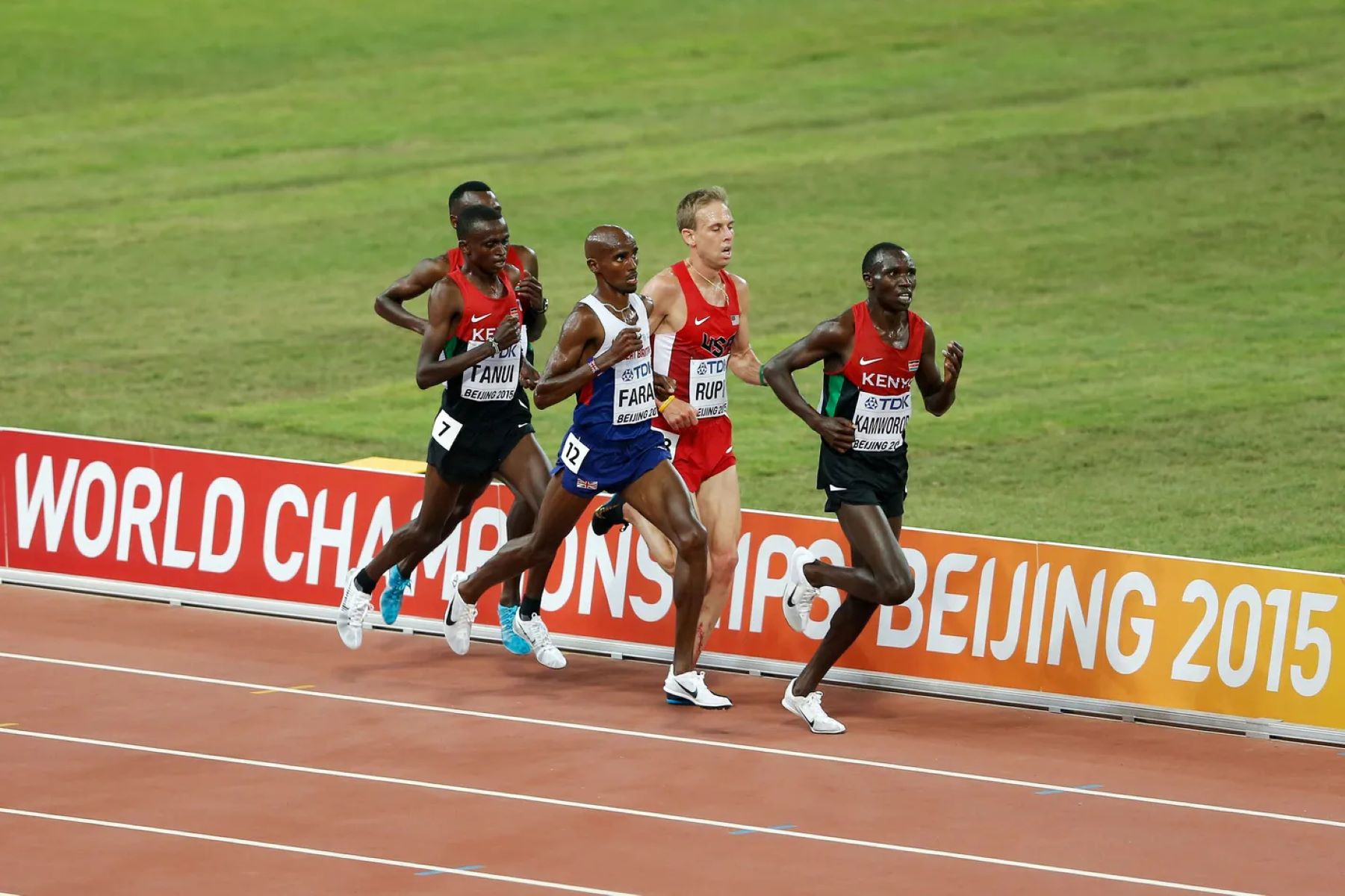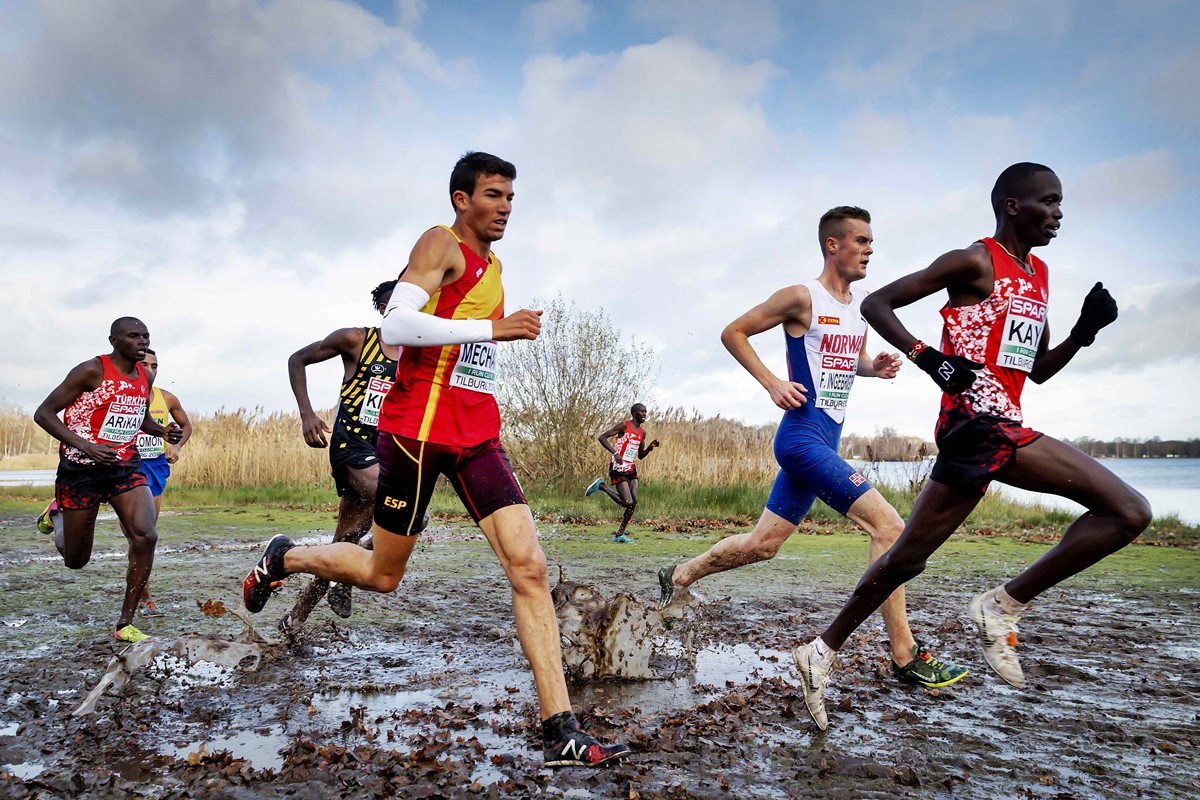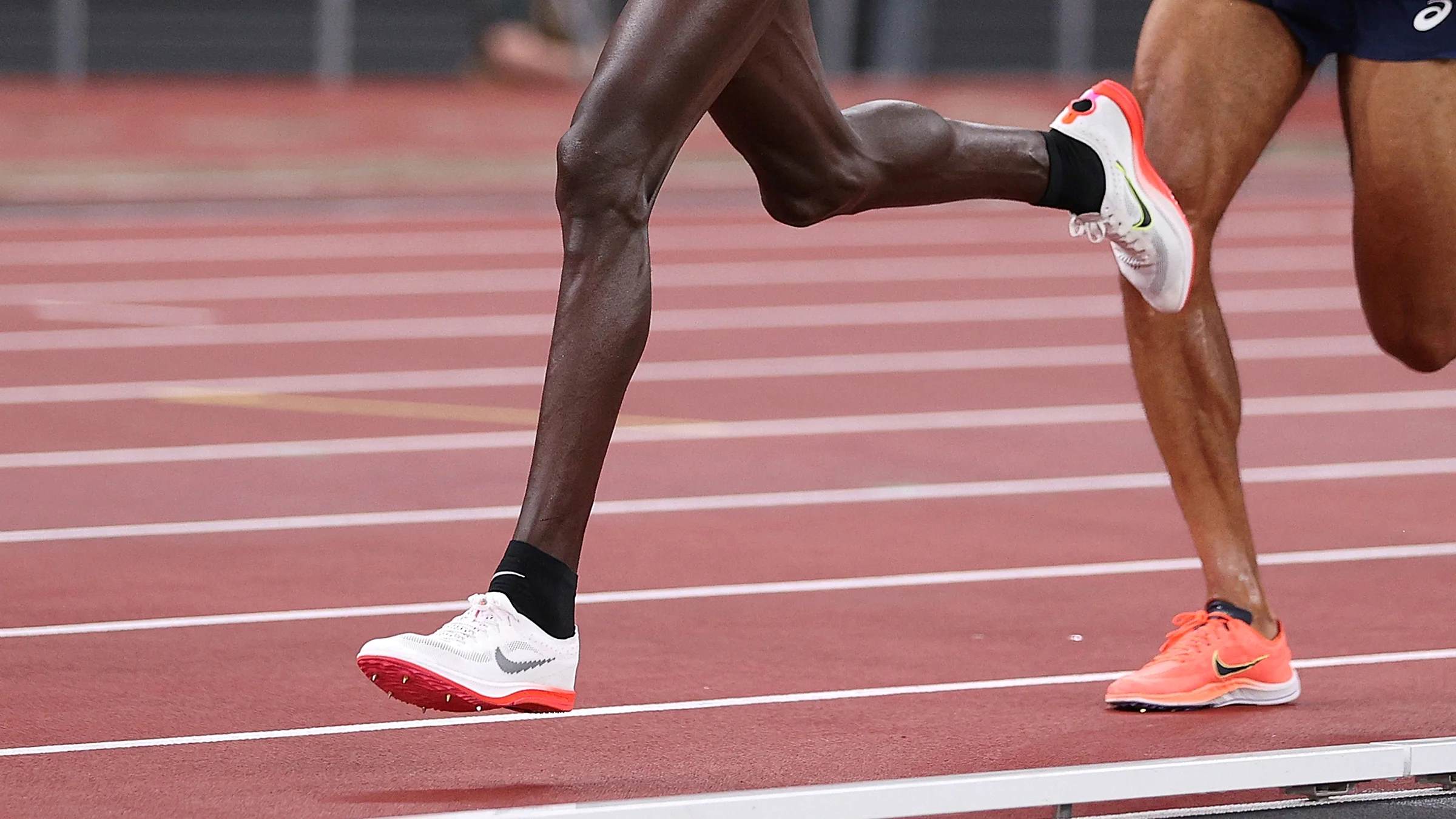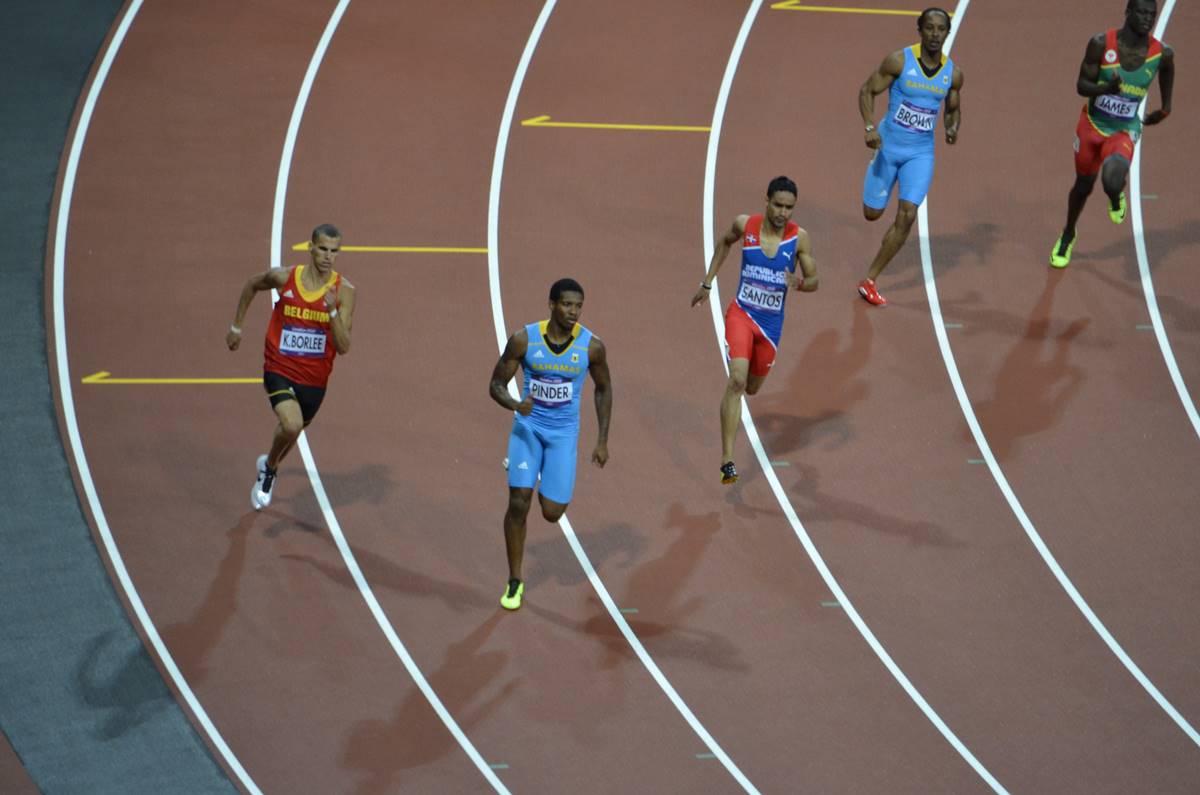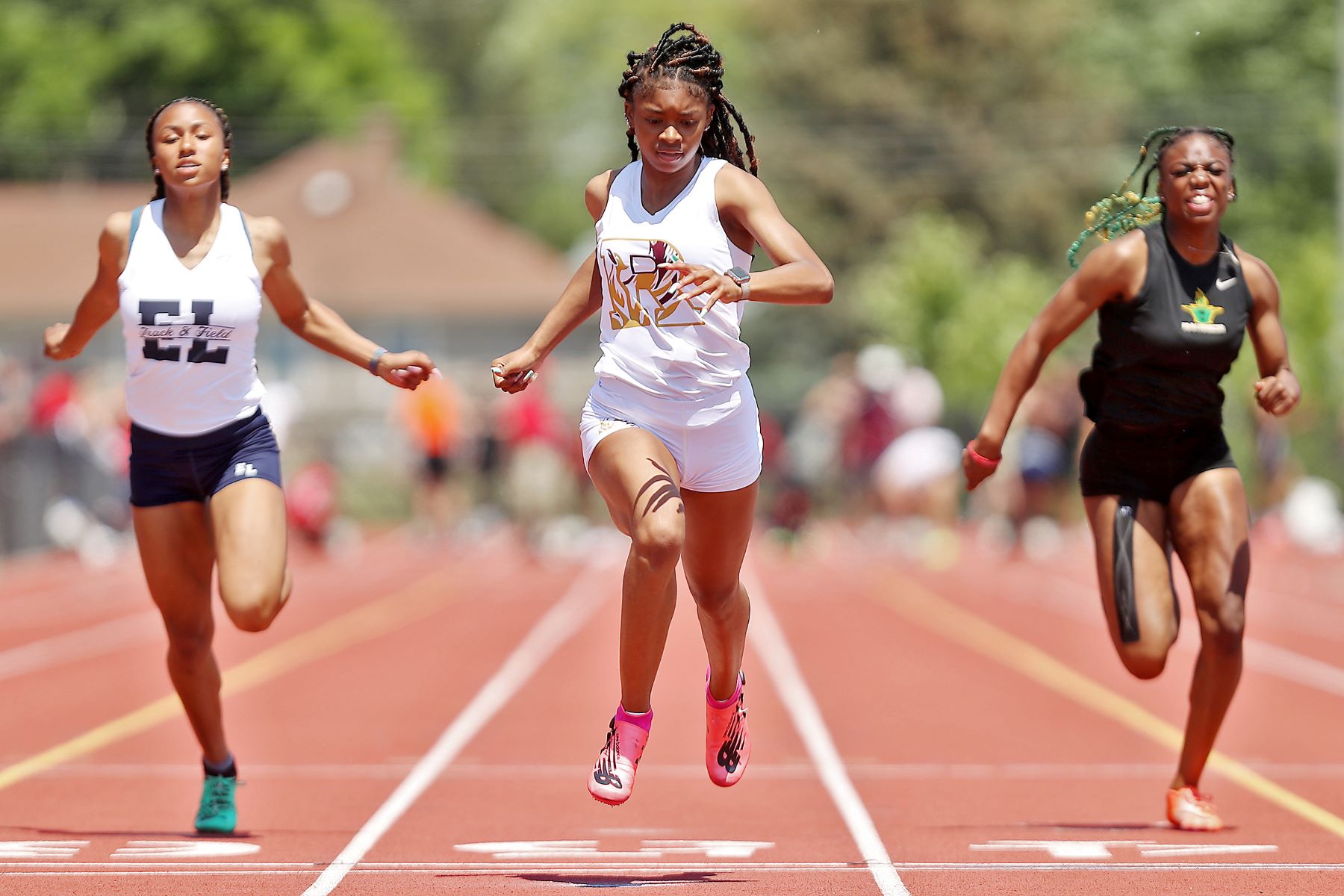Home>Misc>Featured>How Many Calories Does A 100M Sprint Burn


Featured
How Many Calories Does A 100M Sprint Burn
Modified: January 2, 2024
Discover how many calories are burned during a 100m sprint and the health benefits of this featured exercise for optimal fitness. Get fit and burn calories with this high-intensity workout.
Introduction
Welcome to the adrenaline-pumping world of sprinting! One of the most exciting and fast-paced events in track and field, the 100m sprint is a true test of speed, power, and athleticism. Whether you’re a competitive athlete or simply someone looking to incorporate a high-intensity workout into your fitness routine, understanding the calorie-burning potential of a 100m sprint can be valuable information.
When it comes to burning calories, sprinting is one of the most effective exercises. The intense bursts of speed and explosive movements involved in a 100m sprint require significant energy expenditure, making it an excellent choice for those seeking to maximize their calorie burn.
But just how many calories does a 100m sprint burn? This article will delve into the factors that contribute to calorie burn during a 100m sprint, as well as provide tips on how to maximize your calorie-burning potential.
Before we dive into the specifics, let’s take a closer look at what exactly a 100m sprint entails.
What is a 100m sprint?
A 100m sprint is a short-distance race that is often referred to as “the fastest event in athletics.” It is run on a straight track with runners starting from a crouched position in blocks. The objective is to cover the distance of 100 meters in the shortest possible time.
During a 100m sprint, athletes rely heavily on their explosive power and acceleration to propel themselves forward. The race typically lasts for less than 10 seconds, making it an incredibly intense and high-speed event.
Not only does a 100m sprint require physical strength and speed, but it also demands extraordinary mental focus and concentration. Athletes must execute a perfect start, maintain proper form throughout the race, and give their all until they reach the finish line.
Competing in a 100m sprint requires a combination of natural talent, dedicated training, and meticulous preparation. Athletes spend countless hours honing their technique, building their strength and power, and improving their overall speed in order to achieve success in this highly competitive event.
Now that we have a better understanding of what a 100m sprint entails, let’s explore the energy demands associated with this explosive race.
The energy demands of sprinting
Sprinting, especially in a high-intensity event like the 100m sprint, requires a significant amount of energy. This is due to the explosive nature of the sport and the short duration in which athletes must perform at their highest capacity.
During a sprint, the body relies on a combination of energy systems to fuel the muscles and produce the necessary power. The three main energy systems involved in sprinting are the phosphocreatine system, the glycolytic system, and the aerobic system.
The phosphocreatine system provides immediate energy for short bursts of intense activity, such as sprinting. It utilizes stored phosphocreatine in the muscles to produce ATP (adenosine triphosphate), the body’s primary source of energy. This energy system is crucial in the early stages of a sprint, providing rapid energy to accelerate out of the starting blocks.
The glycolytic system becomes more dominant as the sprint progresses. This system utilizes stored glycogen (carbohydrate) in the muscles to generate ATP. While the phosphocreatine system provides quick bursts of energy, the glycolytic system can sustain energy production for a short period without the need for oxygen.
The aerobic system, although not the primary energy system in a 100m sprint, plays a role in providing supplementary energy during the race. This system utilizes oxygen to break down stored carbohydrates and fats, generating ATP. While less significant in a sprint, the aerobic system becomes more important in longer-distance events.
Overall, sprinting places high demands on the body’s energy systems, requiring quick and efficient production of ATP to fuel the intense muscular contractions.
Now that we understand the energy demands of sprinting, let’s explore the numerous factors that can impact the calorie burn during a 100m sprint.
Factors affecting calorie burn during a 100m sprint
Several factors come into play when determining the calorie burn during a 100m sprint. Understanding these factors can help us estimate the amount of energy expended during the race:
- Body weight: The heavier a person is, the more energy they will burn when sprinting. This is because more effort is required to propel a larger body mass forward.
- Intensity: The intensity of the sprint significantly impacts calorie burn. Higher intensity requires more energy expenditure due to the increased power and effort exerted during the race.
- Efficiency: Efficient sprinting technique plays a role in calorie burn. Athletes who have mastered proper form and technique can optimize their energy usage and minimize unnecessary movements.
- Surface and conditions: The surface on which the sprint takes place can affect calorie burn. Sprinting on a soft surface, like grass, requires more effort than running on a harder track. Additionally, factors such as wind resistance and temperature can impact energy expenditure.
- Training status: Well-trained sprinters tend to have higher muscle mass, better cardiovascular fitness, and increased efficiency in energy production. As a result, they may burn fewer calories compared to less trained individuals who rely more on anaerobic energy systems.
- Gender: On average, male sprinters tend to have more muscle mass compared to female sprinters. Muscles require more energy to move, so male sprinters may burn slightly more calories during a 100m sprint.
It’s important to note that the exact calorie burn during a 100m sprint will vary from person to person based on these factors. Many online calculators provide estimations, but keep in mind that they are just rough estimates and individual variations can exist.
Now that we have explored the factors that affect calorie burn, let’s move on to discussing the estimated calorie burn during a 100m sprint.
The estimated calorie burn during a 100m sprint
Calculating the exact calorie burn during a 100m sprint is challenging, as it depends on various individual factors and cannot be accurately measured without advanced equipment. However, estimations can still provide valuable insights.
On average, it is believed that a 100m sprint can burn anywhere from 8 to 15 calories for an average-sized adult. This estimation takes into consideration the intensity and duration of the sprint, as well as some of the factors mentioned earlier.
It’s important to note that this calorie burn estimation is relatively low compared to longer duration exercises like jogging or cycling. However, the intensity of a sprint compensates by targeting different muscle groups and providing a unique cardiovascular challenge.
It’s also worth mentioning that the calorie burn during a sprint is not limited to the actual time spent running the 100m. Additional calories can be burned during warm-up exercises, cool-down period, and during the recovery process when the body returns to its resting state.
While the calorie burn during a 100m sprint may not be significantly high, it is important to remember that sprinting offers numerous benefits beyond calorie expenditure. It helps improve explosive power, increase cardiovascular fitness, and build lean muscle mass.
Now that we have explored the estimated calorie burn during a 100m sprint, let’s move on to some tips that can help you maximize your calorie-burning potential during this intense activity.
Tips for maximizing calorie burn during a 100m sprint
If you’re looking to maximize your calorie burn during a 100m sprint, here are some tips to keep in mind:
- Focus on intensity: The higher the intensity of your sprint, the more calories you will burn. Push yourself to sprint as fast and explosively as possible, giving it your all from start to finish.
- Work on your technique: Improving your sprinting technique can help you become more efficient and minimize energy wastage. Work with a coach or trainer to perfect your form, from your start out of the blocks to your stride and arm movements.
- Incorporate interval training: Interval training involves alternating between high-intensity sprints and periods of rest or lower-intensity recovery. This method can help boost calorie burn and improve overall cardiovascular fitness.
- Include strength training: Building muscle through strength training exercises can increase your overall calorie burn. Stronger muscles can generate more power and efficiency during sprints, leading to higher calorie expenditure.
- Warm up properly: A proper warm-up routine can prepare your muscles for the intense demands of a sprint, helping you perform optimally and minimize the risk of injury. Include dynamic stretches and exercises that target the muscles used in sprinting.
- Stay hydrated: Dehydration can negatively impact performance and hinder calorie burn. Make sure to drink enough water before, during, and after your sprint to maintain proper hydration levels.
- Rest and recover: Giving your body adequate time to rest and recover is essential for optimizing calorie burn and performance. Allow for rest days between sprint workouts to prevent overtraining and promote muscle repair.
Remember, while maximizing calorie burn is important, it’s equally important to listen to your body and avoid overexertion. Sprinting can be intense, so always prioritize safety and consult with a healthcare professional or coach if you have any concerns or underlying health conditions.
Now that we have explored tips for maximizing calorie burn during a 100m sprint, let’s wrap up with a summary of what we’ve learned.
Conclusion
In conclusion, a 100m sprint is a thrilling and intense event that challenges both the physical and mental prowess of athletes. While the exact calorie burn during a 100m sprint varies depending on individual factors, it provides a high-intensity workout that can contribute to overall calorie expenditure and fitness goals.
Sprinting requires significant energy expenditure, relying on the body’s various energy systems to power the muscles. Factors such as body weight, intensity, efficiency, surface conditions, training status, and gender can impact the calorie burn during a 100m sprint.
Although the calorie burn during a 100m sprint may not be as high as in longer duration exercises, sprinting offers unique benefits such as improved explosive power, cardiovascular fitness, and muscle development.
To maximize calorie burn during a 100m sprint, focus on intensity, work on your technique, incorporate interval training and strength exercises, warm up properly, stay hydrated, and allow for adequate rest and recovery.
It’s important to approach sprinting and any high-intensity exercise with caution and consultation from professionals, especially if you have any underlying health conditions.
So, whether you’re a dedicated athlete looking to improve your performance or someone seeking a challenging workout, the 100m sprint can be a rewarding and exhilarating choice to push your limits and burn calories.
Now, get ready to lace up those shoes, hit the track, and experience the exhilaration of a 100m sprint!
